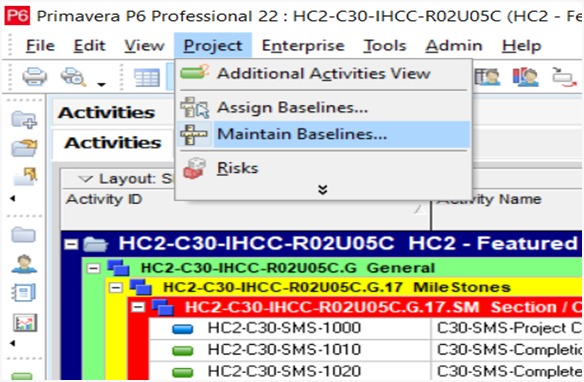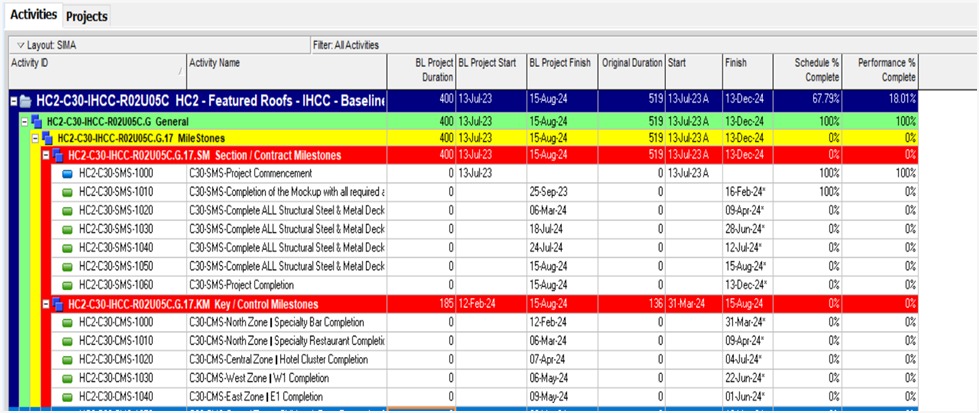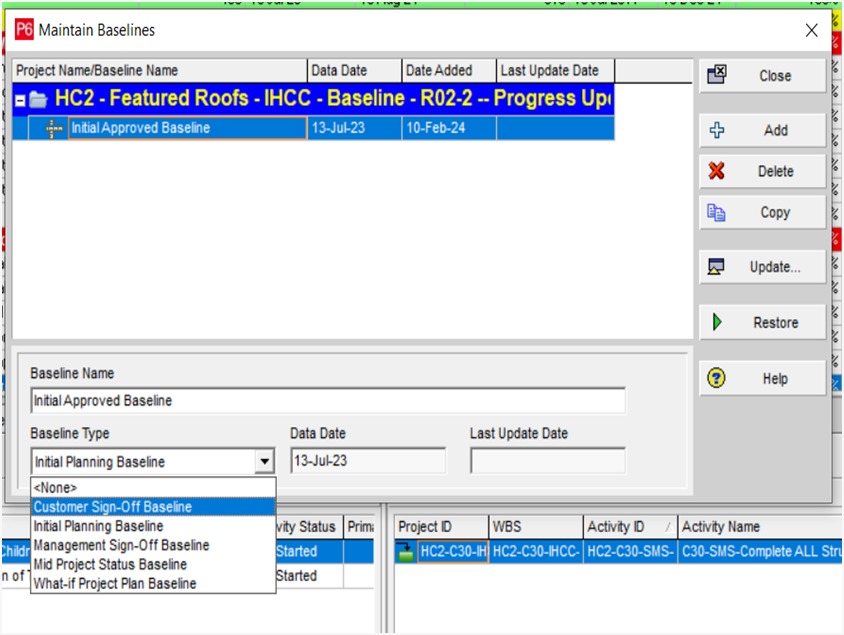A project baseline schedule is the CPM Schedule where all the stakeholders of the project accept the proposed schedule to function as the monitoring basis of the project work. These are the versions against which we will measure all progress and deviations from our project plan. The baseline is the reference against which a project is monitored and controlled.
A baseline is created at the start of a project or at the start of a stage of a project. And once we have it, we can use it as the basis for monitoring and controlling our project. In situations where there is a major change in the project and the project baseline schedule doesn’t accurately forecast the project, the project team should re-evaluate the baseline and update the baseline to reflect the recent changes. In this blog post, we will try to cover five ways in which project baselines can help you deliver projects on time and on budget.
When to create a new baseline and why is it required?
We recreate a new baseline in response to unexpected events. The alternative is proactive baselining.
In this case, we know that at a certain point in the project, there will be something that will happen where we can’t predict the outcome. If the outcome can significantly change the decisions we’re going to need to make or the approach we’re going to need to take, then it makes sense to plan for a re-baselining activity after the outcome of that uncertain event. Once we have some certainty, we can then re-baseline with confidence.

Baselining is implemented in the project management or project scheduling software. In this software, we find that baseline data is stored and therefore can be used for comparison with actual data. At any point in the project, we can compare our updated version of the plan against the baseline. That way we can continually re-plan, and we can also handle minor contingencies and yet maintain the baseline and know how far our planning is drifting from our original baseline plan.
The advantage of creating a project baseline in project management is that a baseline serves as a straight point for comparing performance and progress to the project plan. It helps the project to see plan discrepancies and fix them.

1-Scope Baseline:
The initial scope baseline is usually expressed through a work breakdown structure (WBS) dictionary. Our baseline schedule is reflected in a program of work activities over time, and our baseline budget is an initial statement of costs for our project.

2-Baseline Budget:
Project baselines can apply not only to the schedule for which it is most often used but also to the budget and indeed the scope because scope will change through the process of change control.
Our baseline budget usually includes contingencies, but it tends to exclude management reserves that are outside of the direct control of the project team. If the level of costs rises too far above the baseline, probably if it’s starting to exceed the contingency, then the project stakeholders might consider the re-evaluation of the project business case and way forward.
3-Risk Baseline:
A performance measurement baseline integrates the three main aspects of schedule, budget, and scope and is therefore used for measuring the performance of our project, often using earned value management as the prime methodology.
A risk baseline establishes the level of risk of the project right at the outset. As the project progresses, we will hope and expect that the level of risk will diminish. However, if unexpected events cause the level of risk to rise above the baseline, once again, we need to re-evaluate the project’s business case or investment appraisal.
If, as we should, we are also actively managing our benefits, then we may establish a benefits baseline at the outset, too. This is usually documented in a signed-off benefits case, which sets out the benefits we anticipate from the project.
4-Product Baseline:
The final baseline that is used with any degree of frequency is a product baseline. This sets out the initial specification and design of the product or product set that the project is creating. Of course, as the design changes or the specifications change through a process of change control, we track changes to the product or products through configuration management. If these changes have an impact on the level of benefit that the product or products can create, then once again, we need to re-examine the business case to see if the level of benefits dips below baseline.
5-Value Baseline:
If changes cause the expected level of benefits to dip below the baseline, we need to reassess the business case. It’s also worth noting that the benefits case is not completely independent of the budget and, indeed, the risk assessment. Therefore, we might also consider creating a value baseline by combining benefits with costs and risks. This is not small, and therefore, for most projects, we will try to keep them separate.
Contact Leopard Project Controls for your next CPM Schedule project. We are the top-rated company for construction schedules.
Conclusion:
A baseline in project management is very much the same as a baseline in common usage. It is a foundational measure of something important against which we can monitor our performance and, therefore, make decisions to implement changes when we need to. A project baseline is essentially a snapshot representing the beginning point of our project plan. It is a point of reference that we can use to measure progress and performance throughout the life cycle of a project.
To identify the source of any problem and take corrective action, they can use the baseline as a point of comparison. A project baseline gives all stakeholders a single point of reference; it aids in ensuring that everyone is aware of the project scope, schedule, and spending.
Looking to streamline your project timelines and ensure everything runs smoothly? A scheduling consultant can offer expert advice to help you stay on track and within budget.





